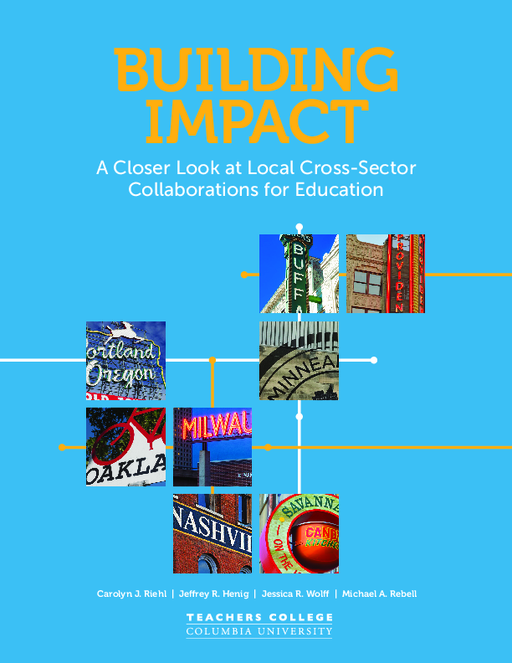- Author(s)
- Carolyn J. Riehl, Jeffrey R. Henig, Jessica R. Wolff, and Michael A. Rebell
- Publisher(s)
- Teachers College, Columbia University
Research Approach
Researchers conducted comparative case studies of eight collective impact education initiatives between 2015 and 2017.
Selecting Case Studies
Initially, researchers were charged with studying three collective impact initiatives. These were to include Say Yes Buffalo and two initiatives that would offer useful complements. After considering about a dozen options, researchers selected initiatives that were part of the StriveTogether network in Milwaukee, Wisconsin and Portland, Oregon.
Researchers quickly realized that the three main case studies would not provide enough variation on a number of important dimensions. They added five collaborations to study in somewhat less depth. These were located in Minneapolis, Minnesota; Oakland, California; Providence, Rhode Island; Savannah, Georgia; and Nashville, Tennessee.
The initiatives varied in the scale of their target area. One covered a specific neighborhood, six targeted an entire city, and one extended to the surrounding county. The set of cases allowed researchers to observe the dynamics, benefits, and tradeoffs of smaller scale vs. larger scale efforts.
Site Visits and Other Activities
To gather data, research teams visited each site, observed program meetings and other activities, and interviewed participants and stakeholders. For each of the three major case studies, three or four-person teams made at least one visit to the city in the fall of 2015 and one in the spring of 2016. For the five other case studies, two-person teams made one field visit to each site between September 2016 and March 2017.
In all, researchers conducted over 290 interviews and observations and gathered extensive documentation on the initiatives.


